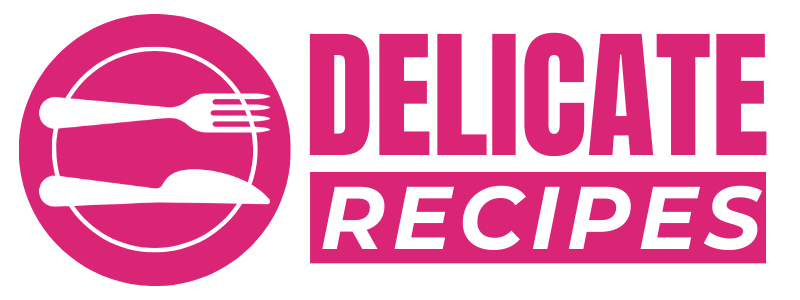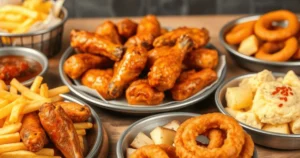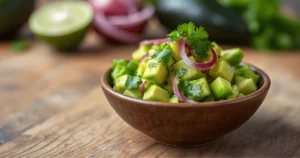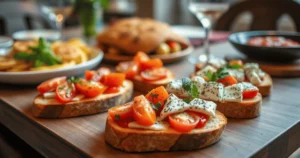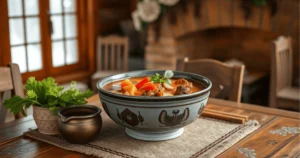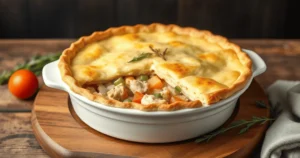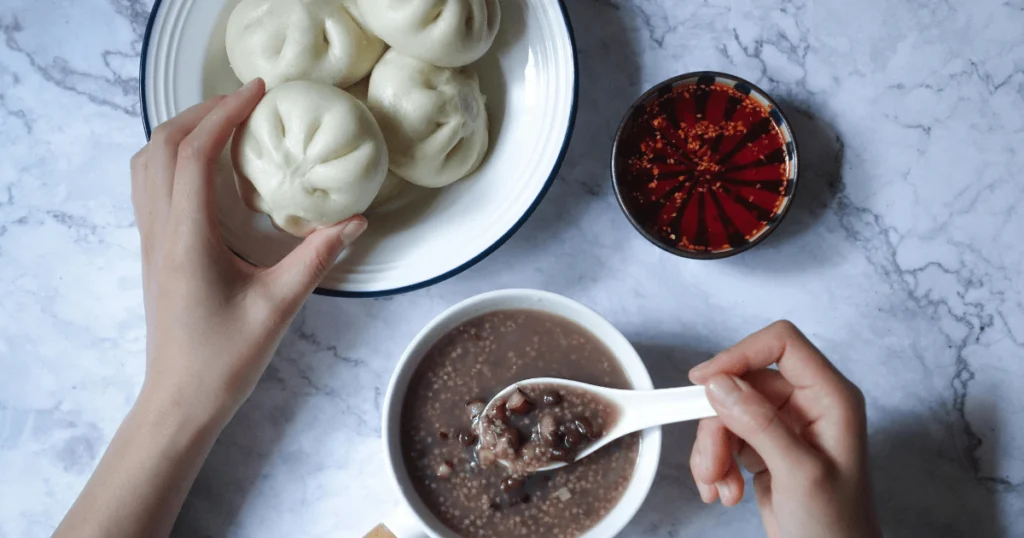
Breakfast in China is a rich and diverse culinary experience. It reflects the country’s cultural heritage and regional diversity. From the savory rice porridge known as congee to the beloved dim sum delicacies, traditional Chinese morning meals offer a delightful array of flavors and textures.
This introduction will explore the best traditional Chinese breakfast dishes. We will look at their cultural significance and the unique regional variations. These make this cuisine so captivating.
Chinese breakfast is more than just a meal. It is a deeply-rooted tradition that embodies the values of family, community, and the appreciation of simple, wholesome ingredients. Whether it’s the soothing warmth of a steaming bowl of congee or the satisfying crunch of freshly-fried Chinese crullers, these morning dishes hold a special place in the hearts and daily lives of the Chinese people.
Understanding the Cultural Significance of Morning Meals in China
Chinese breakfast traditions are deeply rooted in the country’s rich cultural heritage and regional culinary diversity. From the bustling streets of Beijing to the serene villages of Sichuan, the morning meal holds a special place in the hearts and minds of the Chinese people.
Regional Variations Across Chinese Provinces
The Chinese breakfast landscape is a tapestry of regional specialties. Each province has its own unique flavors and customs. In the northern regions, hearty jiaozi (dumplings) and baozi (steamed buns) are common. The southern provinces often feature light and fragrant dim sum delicacies.
The coastal areas, meanwhile, may offer an abundance of seafood-based dishes. These include congee (rice porridge) with preserved eggs or scallion pancakes.
Historical Evolution of Breakfast Customs
The evolution of Chinese breakfast traditions can be traced back centuries. It was shaped by the country’s rich history and culinary innovation. In ancient times, the morning meal was often simple, with farmers and laborers relying on hearty staples like millet porridge or steamed buns.
As dynasties rose and fell, new ingredients and cooking techniques were introduced. This gradually transformed the breakfast landscape into the diverse and vibrant scene we know today.
Social Aspects of Morning Dining
- Breakfast in China is not just about nourishing the body, but also strengthening social bonds.
- Families often gather around the table for a communal morning meal. They share stories and catch up on the day’s events.
- In urban centers, breakfast is a time for coworkers and friends to meet and socialize. It fosters a sense of community and camaraderie.
- The act of sharing a meal, particularly in the morning, is seen as an important social ritual. It reinforces cultural traditions and values.
Essential Components of a Chinese Breakfast
A traditional Chinese breakfast is a mix of staple foods, proteins, veggies, and drinks. These Chinese breakfast ingredients form the base of a typical Chinese breakfast. They offer a balanced and nutritious start to the day.
The main dish is often congee, a savory rice porridge. You can top it with many things, like preserved eggs or shredded meat. It’s a filling choice. Steamed buns or baozi filled with sweet or savory stuff are also common.
| Staple Foods | Proteins | Vegetables | Beverages |
|---|---|---|---|
| Congee (rice porridge) Steamed buns (baozi) Steamed or fried dumplings Noodles | Eggs (boiled, fried, or scrambled) Shredded pork or chicken Preserved meats (sausage, ham) | Scallions Pickled radish or mustard greens Sautéed spinach or bok choy | Hot tea (green, black, or herbal) Soy milk Freshly squeezed fruit juices |
The mix of these Chinese breakfast ingredients makes a balanced Chinese meal. It’s both satisfying and nourishing. This typical Chinese breakfast gives you the energy and nutrients for a great morning.
Popular Congee Varieties and Toppings
Congee, also known as Chinese rice porridge, is a key dish in traditional Chinese breakfast. It’s loved across the country for its versatility and comfort. You can find many regional variations and toppings to try.
Sweet vs. Savory Congee Options
Congee comes in sweet and savory flavors to please everyone. Sweet congee is made with brown sugar, dried fruit, or sweetened condensed milk. It’s a tasty way to start your day. Savory congee, on the other hand, is seasoned with soy sauce, scallions, and more. It’s a heartier choice.
Traditional Congee Accompaniments
- Preserved eggs (also called ‘century eggs’)
- Salted duck eggs
- Crispy fried dough sticks (you tiao)
- Sautéed minced pork
- Pickled vegetables
Health Benefits of Rice Porridge
Chinese rice porridge is not just tasty but also healthy. It’s easy to digest, perfect for sensitive stomachs. It’s also full of complex carbs for lasting energy.
With so many toppings and sides, you can boost your meal with vitamins, minerals, and protein. This makes congee a great choice for a nutritious breakfast.
Dim Sum Favorites for Morning Dining
For those seeking an authentic Chinese breakfast, dim sum is a must-try. This traditional Cantonese cuisine, also known as morning yum cha, is a beloved part of Chinese breakfast culture. Dim sum offers a variety of small, bite-sized dishes served in steamer baskets or on small plates.
These dishes allow diners to sample different flavors and preparations. It’s a way to enjoy a range of tastes in one sitting.
Some of the most popular Chinese dim sum items enjoyed during the morning meal include:
- Char siu bao: Thin steamed buns filled with flavorful grilled meat.
- Shrimp Dumplings: Delicate, translucent dumplings stuffed with fresh shrimp.
- Egg Tarts: Flaky pastry shells filled with a rich, custard-like filling.
- Beef Meatballs: Juicy meatballs seasoned with aromatic spices.
- Sticky Rice Wrapped in Lotus Leaf: Fragrant sticky rice steamed in a lotus leaf wrapper.
The experience of breakfast dim sum is more than just the food. It’s a social gathering where families and friends come together. They enjoy a leisurely morning meal, sharing plates and laughter.
This creates a convivial dining experience that is quintessentially Chinese. It’s a time to bond and enjoy each other’s company over delicious food.
Chinese Breakfast Street Food Classics
Let’s explore the street food delights that make Chinese breakfast unforgettable. We’ll look at traditional Chinese snacks and popular breakfast items.
You Tiao (Chinese Crullers)
The iconic You Tiao is a must-have for Chinese breakfast. It’s a pair of deep-fried dough sticks that are crispy outside and soft inside. These golden-brown Chinese crullers are enjoyed with soy milk, congee, or as a snack on their own.
Baozi (Steamed Buns)
The Baozi is another Chinese breakfast favorite. It’s a fluffy, steamed bun filled with savory or sweet ingredients. You can find fillings like pork and scallion, or red bean and custard. These buns are a hit on the streets.
Jian Bing (Chinese Crepes)
The Jian Bing is a unique Chinese breakfast treat. It’s a savory crepe filled with eggs, scallions, crispy wonton strips, and various sauces. Made fresh on the street, Jian Bing combines textures and flavors for a memorable breakfast.
Traditional Hot Beverages and Soups
As the sun rises in China, the air fills with the aroma of traditional hot beverages and soups. These are key parts of the morning dining experience. From aromatic Chinese breakfast drinks to nourishing Chinese morning soups, they complement solid breakfast fare perfectly.
Jasmine tea is a beloved traditional Chinese tea with delicate floral notes and soothing properties. Pu-erh tea, a robust and earthy variety, is also popular for its believed digestive benefits. Soy milk, a creamy and protein-rich alternative to dairy, is another favorite.
| Traditional Chinese Breakfast Drinks | Key Characteristics |
|---|---|
| Jasmine Tea | Delicate floral aroma and flavor, soothing properties |
| Pu-erh Tea | Robust, earthy taste, believed to aid digestion |
| Soy Milk | Creamy texture, protein-rich alternative to dairy |
Alongside these drinks, Chinese morning soups are also common at breakfast. Nourishing congee, or rice porridge, is a favorite, often topped with various ingredients. Hearty soups like meatball and wonton soup also warm up the day.
- Congee (Rice Porridge)
- Meatball Soup
- Wonton Soup
Whether enjoying a fragrant tea or a comforting soup, these traditional Chinese breakfast drinks and Chinese morning soups offer a true taste of Chinese culinary heritage. They are essential to the morning dining experience.
Must-Try Noodle Dishes for Breakfast
China’s breakfast scene goes beyond congee and dim sum. It offers a wide range of tasty noodle dishes perfect for morning. These Chinese breakfast noodles are a must-try for anyone exploring China’s morning traditions.
Regional Noodle Specialties
Every Chinese province has its own breakfast noodle specialty. In the north, you’ll find hearty Shandong-style noodle soups. The south is famous for delicate Cantonese-style rice noodle rolls.
Venture west, and you’ll discover hand-pulled Xinjiang noodles. They’re served with rich mutton stews.
Soup vs. Dry Noodle Preparations
The world of morning noodle soups is vast. You can try classic beef noodle soup from Taiwan. Or, enjoy fragrant wonton noodle soup from Hong Kong.
For something spicier, try spicy sesame noodles from Sichuan. If you prefer something drier, regional Chinese noodle dishes like chow mein and zhajiang mian are great alternatives.
| Noodle Dish | Region | Notable Ingredients |
|---|---|---|
| Lanzhou Beef Noodle Soup | Gansu | Hand-pulled noodles, beef broth, spices |
| Guilin Rice Noodles | Guangxi | Rice noodles, pickled vegetables, peanuts |
| Dan Dan Noodles | Sichuan | Wheat noodles, spicy minced pork, chili oil |
Where to Find Authentic Chinese Breakfast in America
Looking for a real Chinese breakfast in the U.S.? You have many options. From lively Chinatown areas to special Chinese restaurants, the country is full of places to try traditional morning dishes.
Chinatown neighborhoods in big cities like New York, San Francisco, and Los Angeles are great spots. These areas are filled with Chinese culture. You’ll find markets, bakeries, and eateries with regional specialties. Chinese restaurants in USA in Chinatown offer the most authentic Chinese food in America experience.
There are also authentic Chinese breakfast restaurants outside Chinatowns. They cater to those who want traditional morning food. These places serve a variety of congee, dim sum, and hot noodle dishes, giving you a real taste of Chinese food.
Here are some top picks for Chinese breakfast:
- New World Bistro in New York City’s Chinatown, known for its exceptional congee and savory pastries
- Yank Sing in San Francisco, a acclaimed dim sum institution with a diverse menu of small bites
- Chung King Restaurant in Los Angeles, celebrated for its authentic Sichuan-style breakfast dishes
| Restaurant | Location | Specialty Dishes |
|---|---|---|
| New World Bistro | New York City | Congee, savory pastries |
| Yank Sing | San Francisco | Dim sum |
| Chung King Restaurant | Los Angeles | Sichuan-style breakfast |
With these tips, you’re ready to explore the delicious world of authentic Chinese breakfast in the U.S.
Conclusion
The Chinese breakfast culture is full of life and variety. It shows the deep traditions and rich flavors of this ancient land. From warm rice porridge to tasty street food, Chinese breakfasts are a treat for everyone.
Trying traditional Chinese breakfast dishes opens a window into the country’s history and culture. Enjoying dim sum or a warm herbal tea shows how food brings people together. These morning rituals are a blend of food, culture, and community.
Exploring Chinese breakfast is a chance to taste new flavors and learn interesting stories. It’s a journey into the heart of Chinese breakfast culture, traditional Chinese morning meals, and exploring Chinese cuisine. It’s an experience you won’t forget.
FAQ
What are the most popular traditional Chinese breakfast dishes?
Popular Chinese breakfast dishes include congee (rice porridge) and dim sum items like steamed buns (baozi) and dumplings. Chinese crullers (you tiao) and breakfast noodle dishes are also favorites.
How do regional variations influence Chinese breakfast cuisine?
Chinese breakfasts vary by region. Northern provinces love hearty wheat-based items like jian bing (Chinese crepes). Southern regions focus on rice-based congee and dim sum delicacies.
What are the key components of a typical Chinese breakfast?
A traditional Chinese breakfast balances carbs, proteins, veggies, and drinks. It often has rice, noodles, eggs, meat, pickled veggies, and hot tea or soy milk.
What are the health benefits of traditional Chinese breakfast items?
Many Chinese breakfast items, like congee and veggie dishes, are nutritious. They help with digestion, provide essential nutrients, and boost overall wellness.
Where can one find authentic Chinese breakfast in the United States?
Find authentic Chinese breakfast at Chinese restaurants, especially in Chinatown. Also, try Asian grocery stores and markets for fresh, traditional morning meal ingredients.
